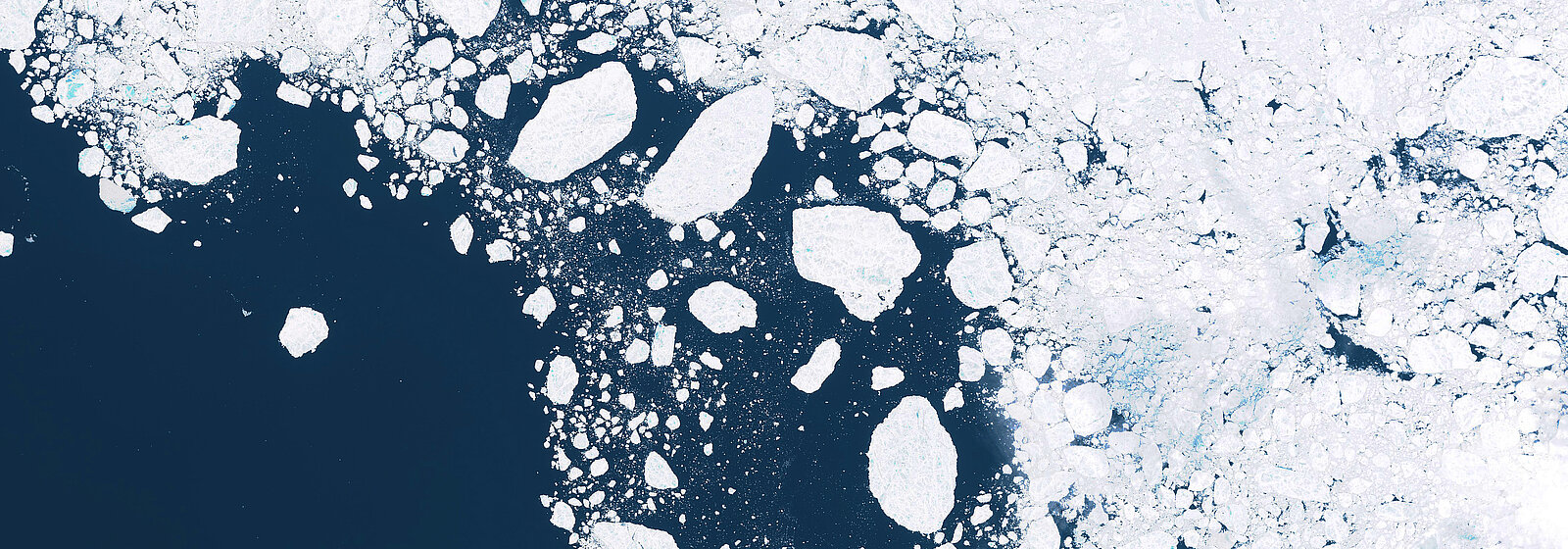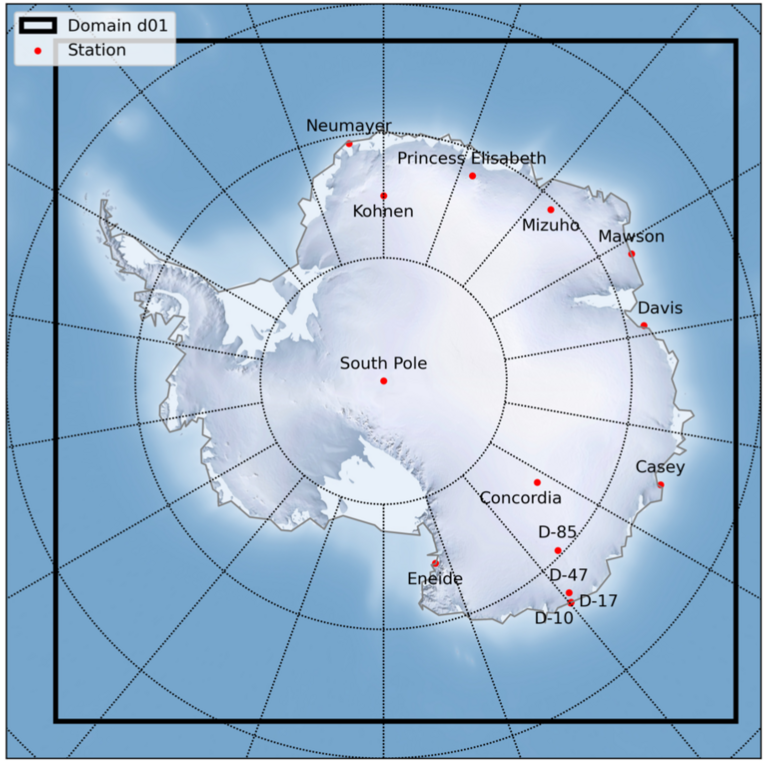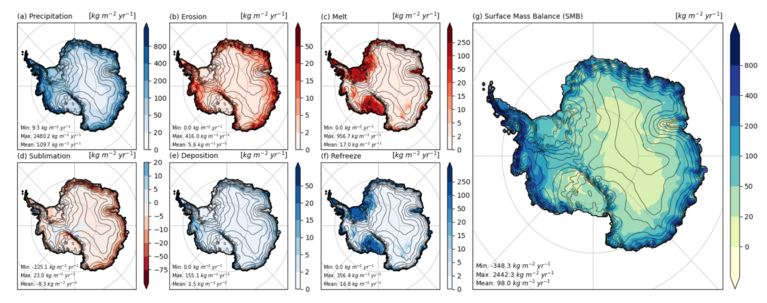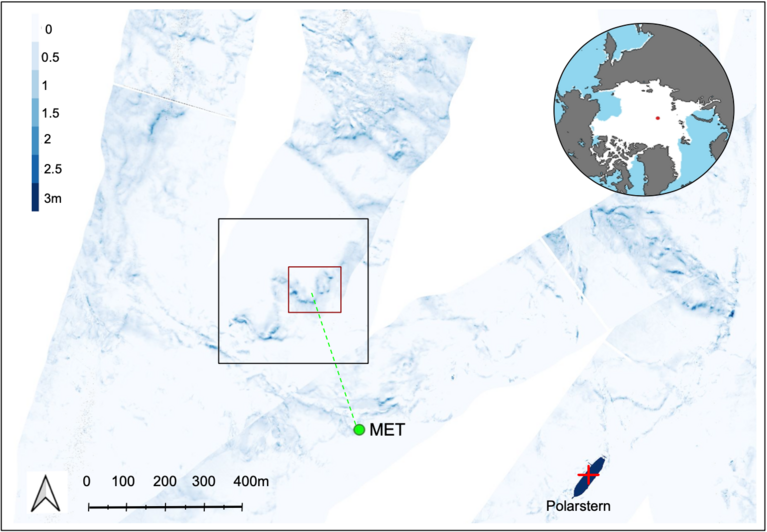November 22, 2021 - by Santina Russo
Global warming is causing the polar ice caps to melt - this has been clear to climate scientists for years. Scientists aim to extrapolate how much polar ice is left and how quickly it will disappear by carrying out simulations on supercomputers like “Piz Daint” at CSCS. Being able to accurately model ice is crucial, since the ice and snow covered regions of the Earth contain the ovewhelming majority of its freshwater deposits; Antarctica alone holds over 70 percent of the Earth’s freshwater. Consequently, the processes taking place there have an immense influence on global weather and climate and on effects of climate change, such as the rate of sea level rise.
The complexity of snow
However, modelling ice and its melt is not an easy matter partly because of the snow that covers it. "Snow is more complex than ice and has a strong influence on ice melt," explains Michael Lehning, a research group leader at the Institute for Snow and Avalanche Research (SLF) of the Swiss Federal Institute for Forest, Snow and Landscape Research (WSL) in Davos and professor at EPFL, Switzerland. On the one hand, snow can slow ice melt because of its albedo: It reflects sunlight more strongly than the ice does. On the other hand, the snow blanket has an insulating effect: It retains heat within the ice and thus prevents meltwater from freezing again. To make matters more complicated, snow forms layers with different microstructures that conduct heat differently and affect the ice differently. Finally, snow can also promote sea ice formation simply because of its weight, which can push floating ice sheets deeper into the ocean, causing more water to freeze.
“To investigate how snow cover influences the ice melt, we have to model all these processes,” explains Lehning. “In addition, the models have to reflect how snow is distributed during precipitation or how it is re-distributed by winds.” The climate scientist and his group specialise in the representation of all processes involving snow and have now introduced their sophisticated SNOWPACK model into the widely used global model WRF (Weather Research and Forecasting model).
Smart interplay between models
The team’s novel coupled code is called CRYOWRF. While WRF provides its atmospheric core, SNOWPACK acts as its land-surface representation. The snow model features a multi-layer description of snow and determines its properties directly from the distribution and size of snow grains, which can be as small as 0.1 millimetres. The grain size is fundamental for snow properties such as packing density, thermal conductivity or albedo.
To combine WRF and SNOWPACK, Lehning’s team programmed interfaces within the models’ codes enabling them to interact with each other. During simulations, SNOWPACK draws data from WRF, such as air temperature, air humidity or the amount of snow preicipitation. In turn, SNOWPACK provides WRF with data on the snow grain size, composition and distribution. “Through this tight coupling, CRYOWRF can represent complex phenomena like snow being transported by wind,” says Lehning.
The whole of Antarctica
To explore the breadth of scenarios that CRYOWRF can simulate, Lehning’s group performed several initial case studies on “Piz Daint” at CSCS. Among them was a simulation and analysis of the surface mass balance of Antarctica, which is the progression of its ice formation and melt, covering a timespan of one year with a resolution of 27 kilometres - meaning Antarctica’s surface was represented by 27-by-27-kilometre squares. To validate their new model, the team compared simulation results from both CRYOWRF and WRF with measured data they had gathered from research groups from twelve different locations on the Antarctic continent.
These comparisons showed that, indeed, with SNOWPACK included in WRF, the results and calculated net effects are different compared to calculations using WRF alone. “This means that the inclusion of accurate snow processes clearly makes a difference in model quality,” says Lehning. In fact, CROYWRF was able to represent certain processes that weren’t apparent in simualtions before, in particular so-called high-blowing snow clouds, meaning clouds of snow travelling with the wind in the atmosphere. These phenomena can be vast and reach altitudes of several kilometres, and have been observed on satellite images. “CRYOWRF is the first model to repreoduce them in a simulation,” states Lehning.
A Ferrari in second gear
These encouraging results were confirmed in a second case study, which was a higher-resolution simulation of a snow storm in the Swiss Alps. Again, the simulation showed high-blowing snow clouds and their characteristics, and again, the scientists could confirm this outcome with real-world data, this time from radar measurements.
However, Michael Lehning stresses that these initial computed scenarios have not yet revealed the full potential of CRYOWRF. “It’s a bit like driving a Ferrari in the second gear,” he explains. “The resolution of these initial validation runs were still too modest to really benefit from the improved physical representations of CRYOWRF. We are now moving on to higher resolution simulations, where the benefits of CRYOWRF will manifest more distinctly. CSCS resources offer a unique opportunity to actually being able to conduct these simulations.”
How fares the north pole?
In a second project, Lehning and his group analysed the snow covering the Arctic sea ice near the North Pole. The remoteness and extreme conditions of the Arctic make it an especally difficult environment to investigate experimentally. For instance, no permanent measuring stations can be operated on the often unstable and constantly changing sea ice. All the more vital, then, are unique undertakings like the MOSAiC polar expedition, in which the icebreaker “Polarstern” was enclosed in arctic ice while researchers collected a multitude of scientific data for almost a year.
Lehning’s team has now used MOSAiC data together with numerical calculations to simulate the deposition of snow on an area of Arctic sea ice. For this, the scientist used a newly developed model named snowBedFoam, which is composed of a snow transport model implemented in the fluid dynamics software OpenFOAM. “This model is not as scalable as CRYOWRF, but it entails even more accurate physical representations of surface snow processes,” explains Lehning.
Using MOSAiC data
The scientists applied their model to simulate an extreme weather event, a snow storm that had raged during the MOSAiC expedition. The simultation showed the impact of the wind on the snow covering the ice and how the snow distribution changed through the course of the storm. To verify the model, the outcome of the simulation was compared to MOSAiC observations of surface snow and ice height both before and after the storm.
As the results showed, most of the snow distributon patterns that had taken place during the storm were accurately captured by the model. Certain phenomena, however, like snow abraison, turned out to be slightly underrepresented by the model. “Although its performance is not perfect, snowBedFoam presents a significant step towards the accurate modelling of snow deposition on sea ice,” says Lehning. “In fact, no other model performes that well on this highly detailed scale. This will help us to better assess and predict snow and ice dynamics in the Arctic.”
Going forward, Lehning plans to run simulations of a larger Arctic area. For instance, he aims to investigate how much snow is blown into the open water between sea ice sheets - to then better estimate how much this process influences the whole mass balance of the Arctic ice. Moreover, he is curious about results from other scientific groups that use different models - ones that maybe employ less accurate physical descriptions but, in turn, are better scalable towards larger areas and longer simulation times. “The work obtained by different methods will help us to determine which processes involving snow are essential to be represented in detail and which ones can be approximated”, says Lehning. “It’s by this combined effort as a community that science is advanced.”
Image above: Shutterstock
References:
- Sharma V., Gerber F. and Lehning M.: Introducing CRYOWRF v1.0: Multiscale atmospheric flow simulations with advanced snow cover modelling. (in review)
- Hames O., Jafari M., Wagner D.N., Raphael I., Clemens-Sewall D., Polashenski Ch., Shupe M.D., Schneebeli M. and Lehning M.: Modelling the small-scale deposition of snow onto structured Arctic sea ice during a MOSAiC storm using snowBedFoam 1.0. (in review)
This article may be used on other media and online portals provided the copyright conditions are observed.



